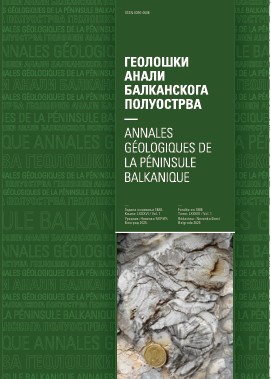Factors contributing to the formation of carbonated mineral water systems in Serbia
Abstract
There are more than 65 occurrences of carbonated mineral water (CMW) within the territory of Serbia. More than 93 % of these systems are found in the geotectonic unit referred to as the Vardar Zone and on the fringes of nearby units. To the east, west and north of the Vardar Zone, CMWs are either rare or nonexistent. The area featuring CMWs is characterized by Tertiary magmatism, a complex geology and deep neotectonic structures. Based on δ13C values of CO2 and HCO3 - in several CMWs in Serbia, and also in carbonates and CO2 from liquid inclusions in several hydrothermal deposits around the world, it was concluded that CO2 in the lithosphere of Serbia could originate from hydrothermal carbonates, and carbonates from sedimentary, metamorphic and magmatic rocks. The findings clearly showed that the main generators of CO2 are located in the Vardar Zone and that CO2 degasification is accomplished through temperature metamorphosis of carbonates (dolomite, calcite). Based on the carbonate transformation temperatures and the temperature conditions in the lithosphere of Serbia, the CO2 might be the result of temperature-induced carbonate transformation below a depth of 3 km. Therefore, the conclusion of the study of CMWs in Serbia is that the formation of CMW systems in the lithosphere depends on the geochemical, temperature, and the magmatic and structural-neotectonic conditions.
Copyright (c) 2022 Geološki anali Balkanskoga poluostrva

This work is licensed under a Creative Commons Attribution 4.0 International License.










